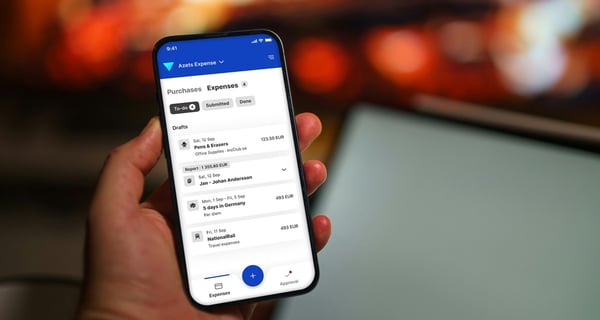

In a highly competitive market, user experience (UX) is an increasingly important aspect of software development. From accounting to logistics, users who look to software to solve solutions expect simple and intuitive UX – and if they don’t find it with your product or service, they can easily look elsewhere.
Changing Expectations
Expense management is one area in which the demand for effective UX has been steadily growing since the transition from paper-based solutions. Early iterations of expense management software tended to be digital versions of paper receipt systems. In terms of UX, their effectiveness was not ideal, but they fitted with what most businesses needed. This was an important evolutionary step in expense management. Mimicking paper expenses in digital format signalled a move away from paper-handling expenses, and of course, fewer staples. But that was nearly a decade ago. Today, things have changed.
Seizing The Challenge Of Improved UX
Findity has a vision of achieving zero touch expense management – reducing the number of clicks, touches, and interactions needed to submit and process expenses. And this is deeply embedded in our approach to both UX and user interface (UI) design. We have a dedicated UX design department who completes robust testing of all flows and user journeys. This enables us to make smaller, iterative changes, which help to continuously streamline improvements. In addition, we run customer feedback sessions focussed on the UI. Our aim is to develop the interface to ensure it is clear and effective, and aligns with our customers’ processes in terms of how they work, and what they need. It’s an ongoing journey.
Seeing The Potential In Zero Touch
Existing users of Findity’s expense management platform are already treated to a simple and streamlined UX. So what further improvements could zero touch facilitate? There’s certainly scope to combine AI and cloud technologies in a number of areas. The mobile app opens up a very real possibility for drivers to use GPS tracking to record mileage and submit claims, simply by clicking ‘start’ and ‘stop’ – automating the submission of mileage data at the end of a journey. Developments in AI also create the potential for the automation of receipt checking and VAT calculations, simply by taking a photograph of a receipt. We envisage the user taking a photograph and the software doing the rest without the need for human intervention: checking, saving, calculating, and sending. Reducing manual interventions, AI is already used to detect VAT, sales tax and so on. Across the EU, taxation is done similarly so that there are generally only minor variations in percentages rates, which the AI can detect. However, for scaling expense management solutions, like the ones provided by Findity, there are many regional variations and regulations to factor into the software – it is therefore important to retain a simple and effective UX. For example, the way mileage rates are calculated can vary significantly between countries; but that doesn’t mean that the way users submit mileage should look any different to each user. It’s a similar story with digital receipts: the way the information is presented can look different across countries and vendors. But as long as the data can be read, extracted, and shared with bookkeeping and payroll systems, the entire process is connected and increasingly streamlined for all users. The ultimate aim for all expense management solutions, is to have a system that picks up a purchase, books it in, and has it ready to reimburse the employee without any intervention.
Making Expense Management Invisible
Feedback from employees who report expenses using Findity’s platform suggests high rates of satisfaction. They find the app intuitive and easy-to-use. The administrator side of expense management solutions is often neglected or seen as an afterthought by most providers. However, it’s an area in which we continually work on, alongside our customers, to improve and optimise their experience as well. For example, we’ve created a handy onboarding wizard to help new customers get started, and our current focus is on improving the UI and UX in our move towards realizing our zero touch ambitions. And looking to the future, Findity’s vision is to create an expense management system that removes the administrative burden, utilizing automation to make it low-effort, innate and virtually invisible.
Ready to take the next step with expense management? Reach out to Findity now. Get in touch with us today.



